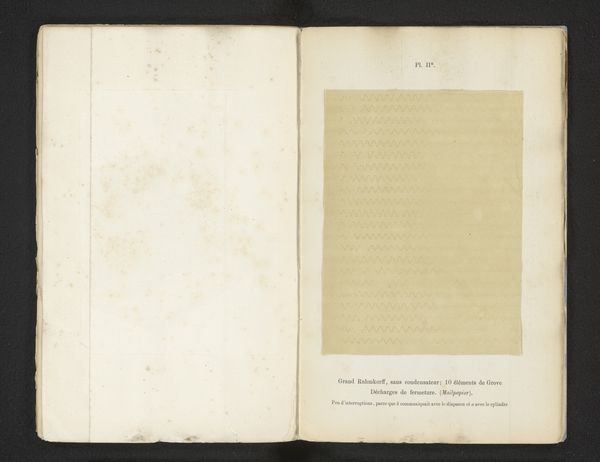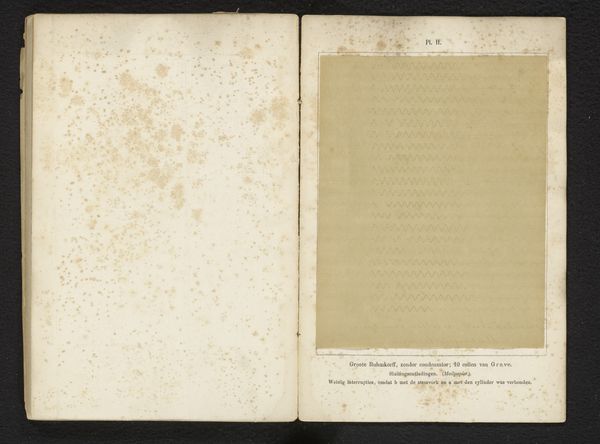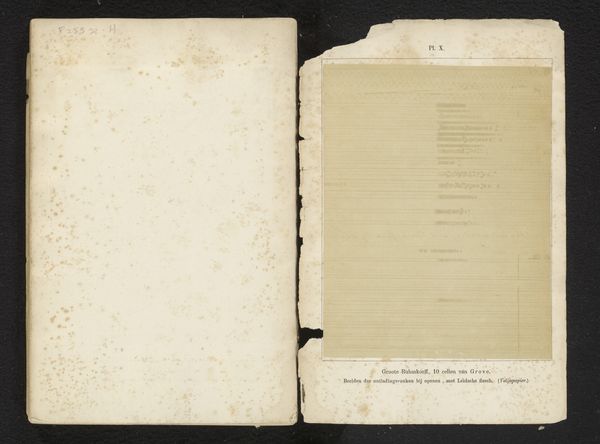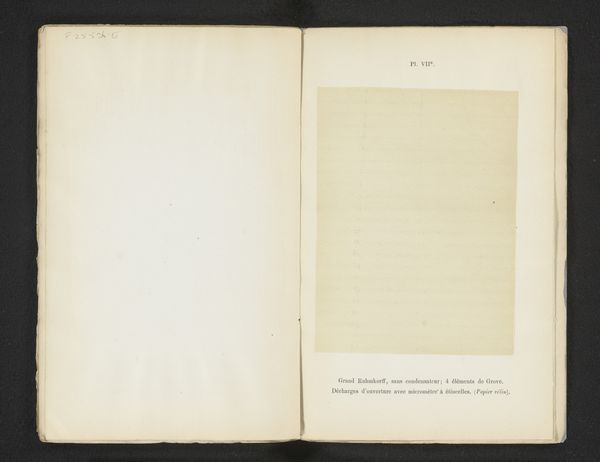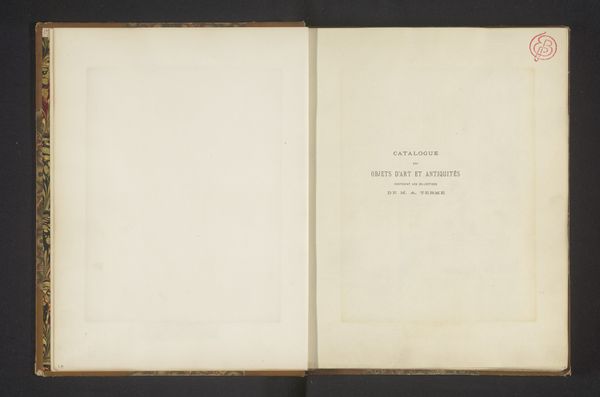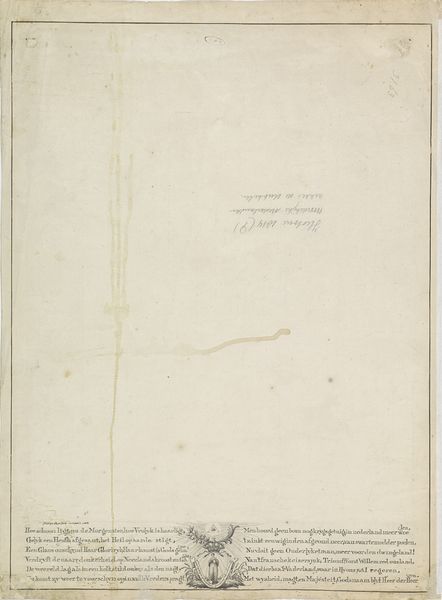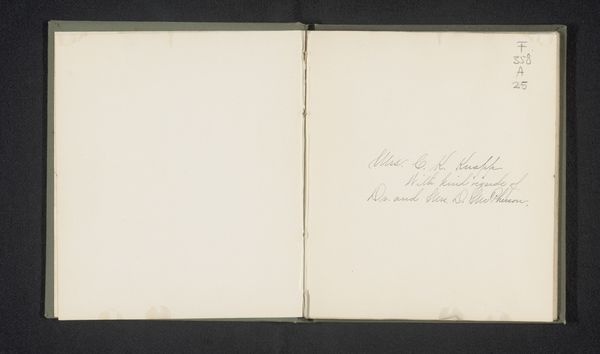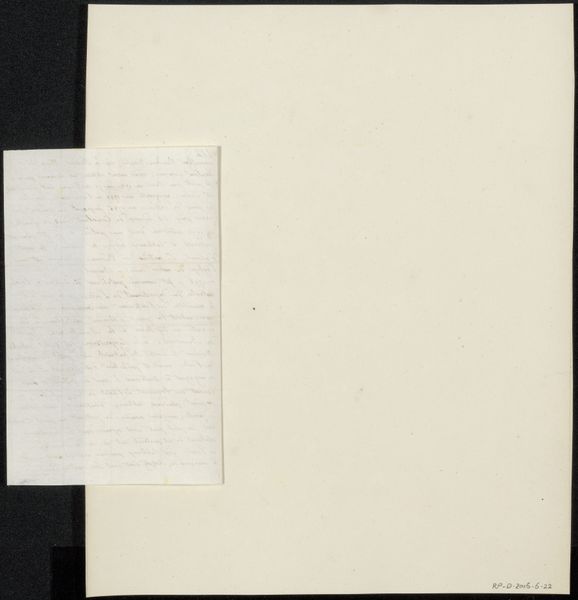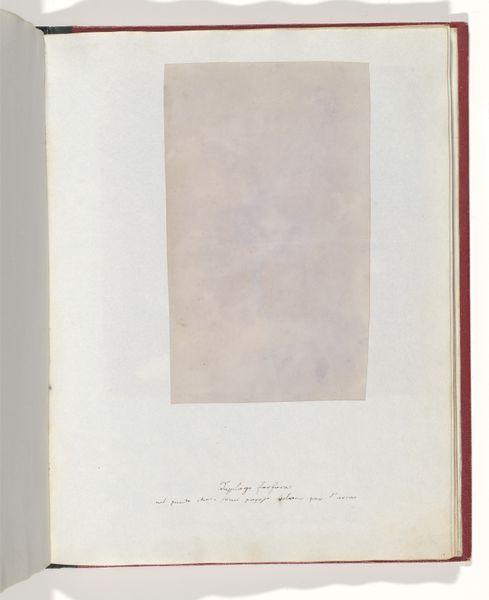
Registratie van electriciteitsgolven opgewekt door een vonkinductor before 1870
0:00
0:00
drawing, print, graphite
#
drawing
# print
#
geometric
#
graphite
Dimensions: height 155 mm, width 115 mm
Copyright: Rijks Museum: Open Domain
Curator: Willem Cornelis van Dijk's "Registratie van electriciteitsgolven opgewekt door een vonkinductor," created before 1870, presents us with an early visual record of electrical activity. Editor: My first impression is one of controlled chaos; the tightly packed zigzags suggest energy barely contained, yet ordered. Curator: Indeed. The geometric repetition invites a structuralist reading. Consider the visual rhythm established by the consistent wave formations—what signifiers might be at play? The graphite marks oscillate, creating a dialogue of presence and absence that mirrors the fluctuating electrical current it seeks to capture. Editor: Beyond representation, it makes me think about the physical act. The process of capturing these fleeting electrical waves likely required carefully calibrated instruments, laborious experimentation, and skilled craftsmanship in both making and interpreting this inscription. How exactly was this achieved in a time where electrical recording devices weren’t readily available? Curator: An excellent point. One cannot ignore how the graphic qualities enhance its expressive value. Note how van Dijk manipulated contrast and tonality. What emotional effect does the work's precise geometry, etched in graphite against aged paper, create for the modern viewer? Editor: This print is more than just science; it shows material traces. The slight imperfections in the print, the worn paper and the inscription underneath reveal a certain degree of care—and offer clues to its usage in some scientific experimentation. Think about the skilled labor, and the accessibility of printing that allowed it to disseminate knowledge in a very nascent, exploratory moment. Curator: By examining the interplay of line, form, and the very medium itself, van Dijk's electrical wave registrations reveal a hidden aesthetic order at work in a non-figurative style. Editor: For me, its real strength lies in showing the fusion of science and handcraft. I feel there's poetry to be found in how human effort tried to capture a glimpse of invisible phenomena at a time before automation made this effort obsolete.
Comments
No comments
Be the first to comment and join the conversation on the ultimate creative platform.
